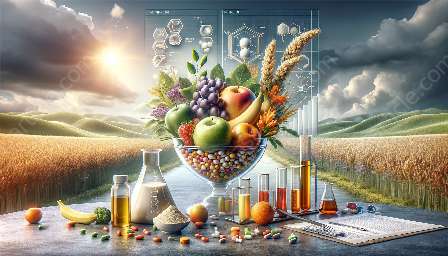A nutrient-food interaction refers to the relationship between nutrients and the foods in which they are found. Understanding these interactions is essential for both food technology and nutrition. From the way nutrients are absorbed in the body to the impact of food processing on nutrient retention, nutrient-food interactions play a vital role in shaping our understanding of nutrition and influencing the development of new food products.
The Role of Nutrition Science in Understanding Nutrient-Food Interactions
Nutrition science is at the core of understanding how nutrients interact with food and the human body. It delves into the various mechanisms of nutrient absorption, transportation, and utilization, shedding light on the intricate relationships between nutrients and the foods we consume. By studying the impact of food processing, cooking methods, and storage on nutrient retention, nutrition science provides valuable insights into optimizing food technology and ensuring the delivery of essential nutrients to consumers.
Nutrient Absorption and Bioavailability
One of the key aspects of nutrient-food interactions is how nutrients are absorbed and utilized by the body. Nutrient bioavailability, or the extent to which nutrients are absorbed and utilized, is influenced by the food matrix in which they are present. For example, certain nutrients may be more readily absorbed when consumed with specific types of foods or in combination with other nutrients, highlighting the importance of considering nutrient synergies in food design and formulation.
Impact of Food Processing on Nutrient Retention
Food technology plays a crucial role in the processing and preservation of food products. However, these processes can also affect the nutrient content of foods. For instance, heat processing methods such as boiling, steaming, or frying can lead to the loss of water-soluble vitamins, while prolonged storage may result in nutrient degradation. Understanding the impact of different processing techniques on nutrient retention is essential for food technologists to develop innovative food processing methods that can preserve the nutritional quality of foods while ensuring food safety and shelf stability.
Application of Nutrition Science in Food Engineering
Food engineering seeks to optimize the production, processing, and packaging of food products. By integrating principles from nutrition science, food engineers can design innovative food formulations that enhance the bioavailability of nutrients and improve overall nutritional quality. This may involve the use of encapsulation technologies to protect sensitive nutrients during processing or the development of functional foods fortified with bioactive compounds to address specific nutritional needs.
Future Perspectives and Innovations
As the fields of food technology and nutrition continue to advance, there are exciting possibilities for leveraging nutrient-food interactions to develop novel food products that promote health and wellness. From personalized nutrition approaches that consider individual nutrient requirements to the use of advanced food processing techniques that maximize nutrient retention, the synergy between nutrition science and food technology holds the potential to revolutionize the way we perceive and consume food.

